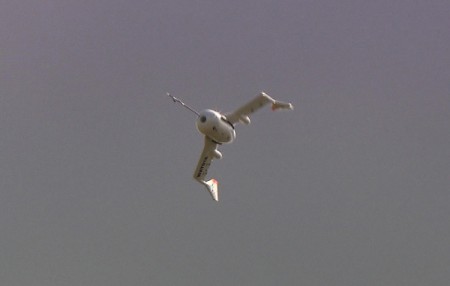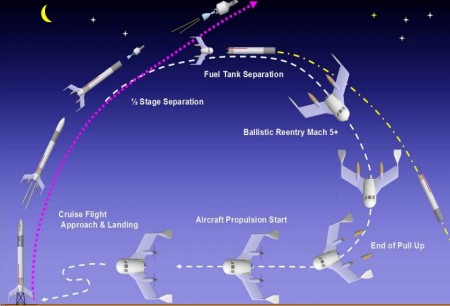June 6, 2015 – The European manufacturer of airplanes and the Ariane rocket used by the European Space Agency (ESA), Airbus, is planning to be in the reusable space launch business by 2025. The goal to have a system to compete with SpaceX. But unlike SpaceX, the technology Airbus is building will not involve piloting the entire first stage back to Earth in a controlled power landing, Instead Airbus will recover its propulsion bay and rocket engine using a heat shield built into the nose of the vehicle.
Airbus working with ESA successfully deployed heat shield technology for the Cassini-Huygens mission that landed a probe on Titan, Saturn’s largest moon. So the company has the expertise and experience in-house already.
How will Adeline work? During descent the propulsion system will use its winglets and on board turboprop engines to steer the stage to a safe runway landing.
Airbus has named this launch system, Adeline. The goal is to reuse the lower stage 10 to 20 times generating a saving per launch between 20 and 30% over current technology.
The diagram below illustrates how Adeline will be deployed.
The company has spent 15 million euros so far building a small prototype, seen below, which has successfully demonstrated the technology. Now they want to scale up.
A second Airbus idea is to use the upper stage of Ariane rockets to develop a space tug that could remain in orbit 1,000 kilometers (620 miles) above Earth for a period of time and be used to position and service satellites launched from the surface. This would reduce the cost of space launches overall allowing ground launches to deploy smaller payloads that could then be assembled and towed to their orbital slots by the space tug. The space tug would be refueled by service payload launches or could return to Earth and land on a conventional runway using Adeline technology.
So now there are a growing number of companies with plans for reusable launch systems. Airbus joins SpaceX, Boeing and Lockheed-Martin, Blue Origin, and Virgin Galactic in a race to reduce the cost of getting to low-Earth orbit. This all bodes well for the democratization of space as getting to space no longer is exclusively the domain of national space programs.










